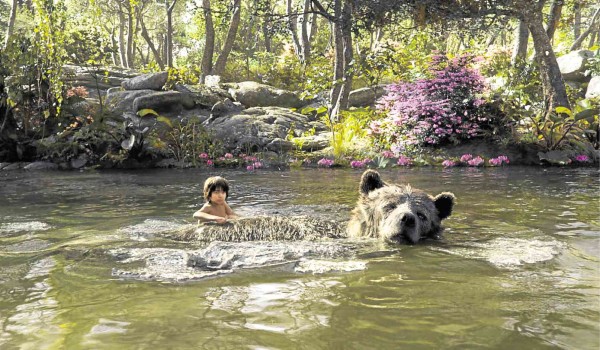RUDYARD Kipling’s “The Jungle Book” has been a popular choice for “filmization” for many decades now.
If memory serves, the first big “Jungle Book” film was made by Alexander Korda in 1942—and its exotic storytelling with Indian characters and actors is now regarded as a durable classic.
In 1967, Disney’s fully animated version of Kipling’s tale, with songs by George Burns (no less) was produced, with its voice actors led by Louis Prima and Sterling Holloway.
The animated version was as well-received as the 1942 live-action original, and has been reissued from time to time.
The latest “Jungle Book,” released last month, appears to be a hybrid of the first two editions: Its lead character, Mowgli, is played by a child actor (Neel Sethi), but its animal cast is digitized and animated.
A significant change is that the 2016 movie’s Mowgli is younger than the 1942 version’s teen protagonist, more like the 1967 movie’s juvenile lead.
This makes the new film more accessible and “relatable” to young viewers.
Instructively, however, the new production is narrated and visualized with greater subtlety, so older viewers can also enjoy it.
Animation
The fact that film animation has advanced so much in recent years makes the 2016 production the most sophisticated and artistic version of them all.
It evinces much greater detail in terms of visualizing difficult subjects like fire, fur, different kinds of animal skin, moving musculature, etc.
But, all of these technical and technological advances are still subject to their pertinent and insightful use by the production’s artists and craftsmen, led by director Jon Favreau.
Happily, the team’s artistic choices are spot-on, and the visuals don’t run away with the show.
We just have a few quibbles: The storytelling is set in India, but the characters speak with an American accent!
Of course, the obvious explanation for this is that the makers are American, and the production’s main market is still the United States, despite the stronger showing these days of film “territories” in different parts of the world.
Another distraction is the creation of a really gigantic simian monarch for the film’s big finale, so huge that he looks more like King Kong than a realistic creature, unlike most of the animals in the movie.
But, these are small potatoes in the light of the new version’s virtues, which are paced by new child actor Sethi’s simple yet compelling portrayal of Mowgli.
Other plus points include the effectiveness of the movie’s emotional and dramatic scenes, and the spot-on shifts from comedy to drama and musical scenes, like the antic staging of the production’s signature production number, “Bare Necessities.” —And a good time is had by all!
